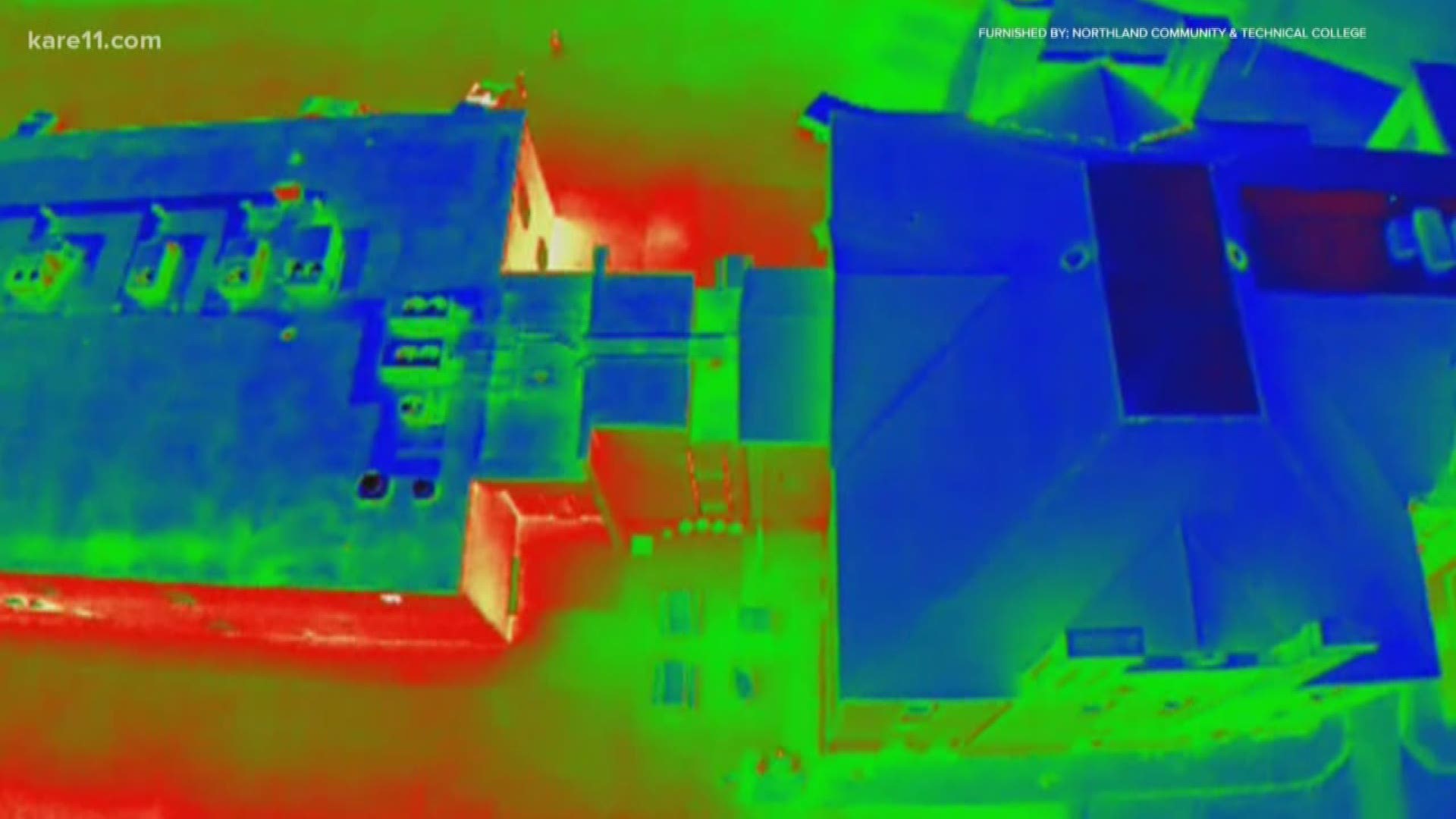WARREN, Minnesota — A northwestern Minnesota city is using drones to help identify heat loss in every single building in town.
The city of Warren launched the project in 2016, inspired by its sister city in Arnsberg, Germany that was doing thermal imaging in its community.
The data will be used to help the city and homeowners make their buildings more energy efficient.
"This morning it was like 18 below and it's supposed to be a high of 5 below. So yeah, we go through a lot of energy this time of year," said Shannon Mortenson, city administrator for the city of Warren.
According to the 2010 census, Warren has a population of nearly 1,600. Mortenson said they are gathering images of about 900 residential and commercial buildings. Warren is among the first in the country to deploy drones at this scale.
"I am finding out that it's very unique... there aren't very many in the United States that have had their entire community scanned," Mortenson said.
For the project, the city of Warren partnered with Northland Community and Technical College in Thief River Falls.
Zackary Nicklin, the program manager for the UAS programs at the college, has been volunteering for the project. Grant money is paying for his transportation costs.
"I include students to come out with us and get them the experience any time they can," Nicklin said.
Nicklin said they've taken more than 12,000 thermal images. Nicklin said it's been a challenge because of the small window available for flying the drone. Nicklin has to take into consideration the time of day and the weather.
When looking at the thermal images, different colors relate to different temperatures.
"The heat loss would be a lighter color. So on the spectrum there, generally the purples, deep blues and blacks are very cold and then you get reds and whites and yellows as the hotter end," Nicklin explained.
When they go over a roof, a bright colored spot will appear directly over a chimney. However, they've also seen lighter colors pop up in places they shouldn't.
For example, Mortenson said their courthouse has a bank of windows that was showing up as a problem area. It turns out the glass is old.
"They've been looking at replacing those windows because there was a huge amount of energy loss, according to the scans," Mortenson said.
Nicklin said right now students are processing the data. They're done scanning the buildings but might have to redo a few sections.
The city hopes the scans will be available by the summer. Only the homeowner will be able to see images of their property.
"So we're hoping to be able to provide some type of low interest loan program to assist homeowners in making the energy upgrades based on what is in their scans," Mortenson said.
Nicklin added, "There's a lot of older houses out here so things like windows, doors, attic insulation and even wall insulation that begins to kind of slump over time."
Nicklin gave an example of his own home. When they first bought the house, their heating bill was nearly $700 per month in December and January. After insulating their attic, it dropped their heating bill to about $300 per month.
According to Mortenson, many other communities are interested in the project and have reached out to the city of Warren.
Mortenson said, "It's definitely a project that is piquing a lot of cities' interests."

